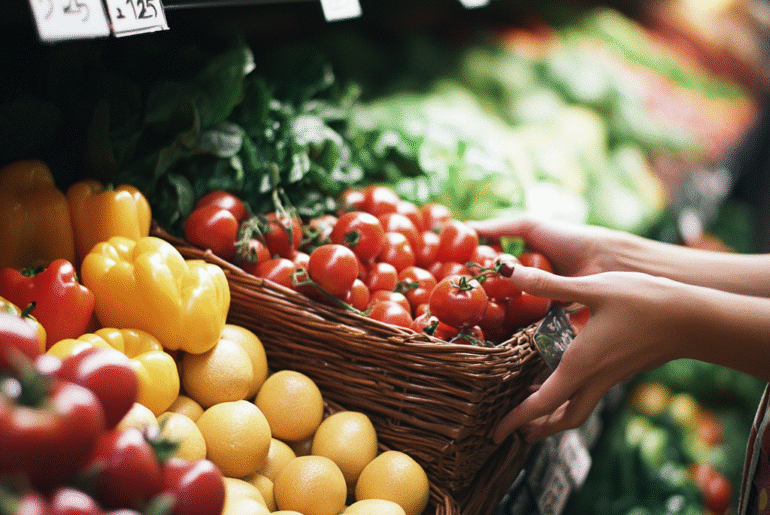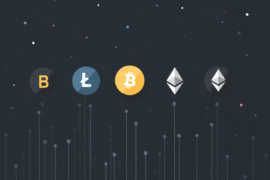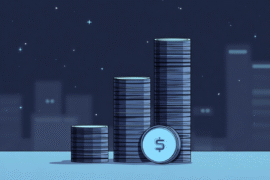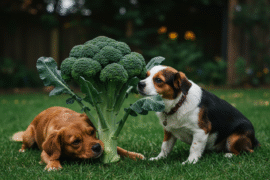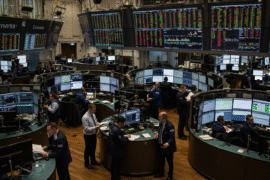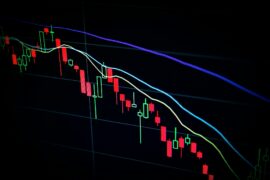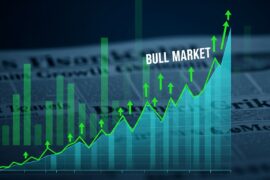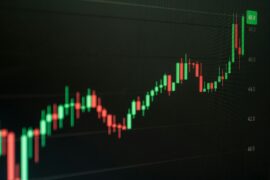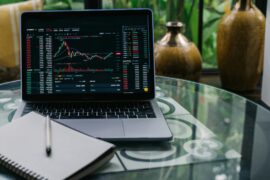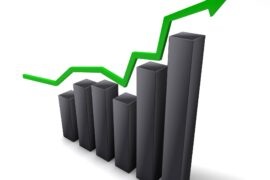This article may contain references to products or services from one or more of our advertisers or partners. We may receive compensation when you click on links to those products or services. Nonetheless, our opinions are our own.
The information presented in this article is accurate to the best of our knowledge at the time of publication. However, information is subject to change, and no guarantees are made about the continued accuracy or completeness of this content after its publication date.
Have you ever noticed that your shopping cart appears to be lighter on the things you need but heavier on your wallet every time you go to the grocery store? It’s normal to wonder what is causing these price increases as you walk through the aisles filled with familiar brands that seem to be getting more expensive every week. We’ll look at the complicated world of grocery prices, recent trends, and what experts think will happen in 2025. You can figure out why everyday things cost so much by learning about how supply chains work, inflation, and what the market wants. Let’s examine what impacts your grocery budget and what to expect in the future.
- The Root Causes of Rising Grocery Costs
- Intensifying Climate Change Impacts on Agriculture:
- Supply Chain Resilience and Evolution:
- Persistent Labor Market Challenges:
- Nuances in Corporate Pricing Strategies:
- Evolving Economic Landscape and Consumer Behavior:
- How Inflation and Supply Chain Issues Impact Your Grocery Bill
- The Role of Consumer Behavior in Price Surges
- Smart Shopping Strategies to Counteract Grocery Price Increases
- The Future of Grocery Shopping: Trends to Watch in 2025
- Preparing Your Budget for the Changing Grocery Landscape
- Conclusion
- Frequently Asked Questions
- What are the main factors driving up grocery prices in 2025?
- How significant is inflation in the rising cost of groceries?
- What role do supply chain issues play in food pricing?
- Are there any benefits to consumers despite rising costs?
- What predictions can be made about grocery prices in the near future?
- What can consumers do to manage grocery costs effectively?
- Recommended Reads
The Root Causes of Rising Grocery Costs
It’s difficult to ignore how much more expensive everyday items are getting as you walk through the grocery store. There are several reasons for this steady rise, and some of them may surprise you. Supply chain problems are at the top of the list, and they can occur due to global events, trade policies, or even local shortages. Prices go up when things are harder to find. Inflation is also a big factor. Retailers pass on the costs of production and transportation to you, the customer, as they go up. Think about the last time you saw a small price increase on your favorite cereal or a sudden price increase on fresh produce. These things are often a sign of more serious problems.
Changes in how people shop are another factor that affects grocery prices. When more people want certain things, like organic or plant-based foods, the prices of those things can go up. Extreme weather can also stop farming from happening, which can make some crops hard to find. Here’s a quick overview of some of the key factors at play:
| Factor | Impact on Prices |
|---|---|
| Supply Chain Disruptions | Increased costs from transportation and logistics delays |
| Inflation | Higher costs passed down from producers to retailers |
| Consumer Demand | Price hikes on trending or high-demand items |
| Weather Events | Reduced crop yields leading to scarcity |
If you understand these complicated factors, you can make smart decisions about how to budget for your grocery costs. Think about other options or plan meals that use the most of the ingredients you need without going over budget. Every little thing you do helps you take charge of your financial future.
Intensifying Climate Change Impacts on Agriculture:
While the general understanding is that climate change affects agriculture, the 2025 outlook reveals more specific and immediate consequences:
- Regional Vulnerability and Crop Shifting: A new study from Aalto University (March 2025) highlights that low-latitude regions are disproportionately affected by rising temperatures and altered precipitation. Up to half of crop production in these areas could be at risk, leading to significant drops in crop diversity and food security. Conversely, mid- and high-latitude areas might see opportunities for new crops (e.g., vineyards in the UK) or longer growing seasons. This means a potential shift in where certain foods are grown, impacting transportation costs and the availability of traditional products in certain markets.
- Specific Crop Sensitivity: Staple crops like wheat, maize, and rice are particularly sensitive to temperature increases, especially during critical growth stages like flowering and grain-filling. Heat stress can lead to reduced grain formation and lower yields. For instance, the UK has experienced issues with broccoli, cauliflower, carrots, parsnips, and potatoes due to extreme rainfall in late 2023 and early 2024, impacting spring plantings and early harvests.
- Pests, Pathogens, and Soil Health: Warmer, wetter winters can create favorable conditions for new pests and diseases to emerge and spread, further threatening crop yields. Additionally, extreme weather contributes to soil erosion and degradation, which directly impacts agricultural productivity.
- Livestock and Dairy Impacts: Heat stress also affects livestock, particularly dairy cows, leading to reduced appetite and milk production. This directly contributes to higher prices for dairy products.
- Water Scarcity and Quality: Droughts continue to impact water availability for irrigation, especially in regions like the U.S. Southwest. At the same time, heavy rainfall events can lead to flooding and waterlogging, destroying crops and impacting water quality, which can further complicate agricultural practices.
Supply Chain Resilience and Evolution:
The food industry is actively trying to build more resilient supply chains, but the transition is ongoing and costly:
- Increased Visibility and Automation: Companies are investing in real-time tracking systems (IoT, AI, blockchain) to monitor shipments, inventory, and product conditions. This helps identify and address disruptions more quickly. Automated warehouses and optimized logistics aim to reduce manual errors and bottlenecks.
- Diversification and Supplier Relationships: Businesses are diversifying their supplier networks across different geographies to reduce dependence on single sources. Building stronger, more collaborative relationships with suppliers, including long-term contracts and transparent forecasting, is crucial for shared resilience.
- Product and Production Flexibility: Some companies are exploring alternative product offerings (e.g., turkey-based options during chicken shortages) and even relocating production to regions with more favorable climatic conditions.
- Sustainability as a Core Strategy: Beyond simply being “green,” sustainability is becoming a critical component of supply chain resilience. This includes ethical sourcing, reducing waste (e.g., through improved inventory management and consumer education on product labels), adopting eco-friendly packaging, and investing in renewable energy for logistics. Regenerative agriculture practices are gaining traction, with large companies like Nestlé and PepsiCo investing in initiatives to restore soil health and improve ecosystem resilience. These efforts, while beneficial long-term, can involve upfront costs that are passed on.
Persistent Labor Market Challenges:
The food processing industry continues to grapple with significant labor shortages and evolving skill requirements:
- Unfilled Positions: The Manufacturing Institute estimates that over half of the nearly four million new roles needed in the manufacturing industry by 2030 (around 2.1 million positions) could remain unfilled. This directly impacts the capacity of food processing plants.
- Automation and AI as Solutions: To address labor bottlenecks, companies are increasingly adopting AI and automation for tasks like quality control, predictive maintenance, and supply chain optimization. While this can increase efficiency, the initial investment in such technologies is substantial.
- Upskilling and Reskilling: The skills required in the workforce are changing rapidly. Employers are prioritizing upskilling and reskilling existing employees, focusing on analytical thinking, resilience, flexibility, and digital literacy. This investment in human capital also contributes to operating costs.
- Attracting and Retaining Talent: Companies are focusing on strategies like improving employee health and well-being, offering better talent progression, and tapping into diverse talent pools to attract and retain workers in a competitive market. These efforts can translate into higher labor costs.
Nuances in Corporate Pricing Strategies:
While “blame inflation” might have been a factor, current pricing strategies are more sophisticated:
- Dynamic and Value-Based Pricing: Retailers are increasingly using dynamic pricing models that adjust prices in real-time based on factors like supply chain costs, market demand, and competitor pricing. A key trend is value-based pricing, where prices are set based on the perceived worth of the product to consumers, rather than just cost-plus markup. This allows companies to justify higher prices for products with unique attributes, sustainability credentials, or perceived health benefits.
- Strategic Price Increases and Product Diversification: Instead of uniform price hikes, companies are taking incremental approaches, targeting specific products or categories. They are also diversifying product offerings, introducing budget-friendly options alongside premium ones to cater to a broader range of consumer preferences and budgets.
- Consumer Sentiment and “Elasticity”: Retailers are keenly aware of consumer price sensitivity. While in-demand items might tolerate higher prices, companies are wary of driving consumers to switch to cheaper alternatives or private labels. This is why some retailers might promote private-label brands more aggressively in response to supplier price increases.
- Transparency and Communication: Some companies are attempting to communicate openly with customers about pricing changes, explaining the reasons behind them and highlighting investments in sustainability or quality that might justify higher costs.
Evolving Economic Landscape and Consumer Behavior:
The broader economic environment in 2025 is influencing both costs for producers and consumer willingness to pay:
- Persistent Inflationary Pressures: While global inflation might be losing steam in some regions, the U.S. specifically is expected to see inflation accelerate and peak between 3% and 3.5% in Q3 2025. This is partly due to companies passing on tariff-related costs and continued labor shortages.
- Impact of Tariffs: New U.S. trade policies, particularly increased tariffs on imported goods, are a significant driver of higher production costs, which are then passed on to consumers. For example, a 25% tariff on Mexico and Canada, along with 10% tariffs on China, could increase core PCE (Personal Consumption Expenditures) inflation by 0.5 to 0.8 percentage points.
- Slowing Economic Growth and Consumer Anxiety: Global economic growth is set to weaken in 2025, and in the U.S., economic growth is expected to slow significantly. Consumer sentiment remains anxious, with concerns about rising prices and the impact of tariff policy on their personal finances.
- Shift in Consumer Spending Habits: Consumers are becoming more price-sensitive and value-conscious. Convenience is no longer king; affordability is. Many consumers are actively seeking ways to stretch their budgets, either by buying less, opting for cheaper alternatives, or prioritizing private-label brands. The savings rate has dipped, indicating consumers may be spending what they can ahead of anticipated price increases.
- Real Wage Growth and Purchasing Power: While some markets might see easing inflationary pressures, price levels remain high, and many households have not yet experienced real wage growth sufficient to restore pre-2022-2024 purchasing power. This means consumers are increasingly allocating more of their disposable income towards necessities like food, limiting spending on discretionary items.
Voted "Best Overall Budgeting App" by Forbes and WSJ
Monarch Money helps you budget, track spending, set goals, and plan your financial future—all in one app.
Get 50% OFF your first year with code MONARCHVIP
How Inflation and Supply Chain Issues Impact Your Grocery Bill
Walking through the grocery store makes it difficult to ignore how much more expensive things are. Inflation is a big part of this. When prices go up, it costs more for farmers and manufacturers to make things. This creates a chain reaction that impacts the entire supply chain and ultimately results in higher prices in your shopping cart. You may have noticed that the prices of basic items like milk, eggs, and bread have gone up a lot, often faster than wages have gone up. Such increases can have a direct effect on your monthly budget and how you spend money in general.
In addition to inflation, supply chain issues continue to plague the grocery market. Factors contributing to these problems include:
Transportation delays: Disruptions from global shipping impact the availability of products.
Pandemic fallout: Labor shortages and production halts still resonate through supply chains.
Climate change: Extreme weather events can decimate crops, pushing prices higher.
These issues raise your grocery bills, so you must rethink your budget and shopping. Knowing the root causes can help you make better decisions, like looking for sales, buying in bulk, or even seeking local options for fruits and vegetables and pantry staples.
| Item | 2023 Price | 2025 Projected Price |
|---|---|---|
| Milk (1 gallon) | $3.50 | $4.00 |
| Bread (1 loaf) | $2.50 | $3.00 |
| Eggs (dozen) | $2.00 | $2.50 |
The Role of Consumer Behavior in Price Surges
When trying to figure out why grocery prices are going up so quickly, it’s important to know how people shop. How you and other people shop affects demand and, in the end, prices. When you notice a surge in prices, it’s often driven by several key factors:
Supply and Demand: As more people opt for certain products—be it organic vegetables, gluten-free items, or locally sourced meats—the demand increases. When demand exceeds supply, prices naturally go up.
Market Reactions: Social media and online forums shape shopping habits rapidly. When a particular item trends, it can lead to sudden spikes in demand, triggering price surges you might not expect.
Economic Confidence: If you and your peers feel confident about the economy, you’re more likely to make bulk purchases or try premium brands, further driving prices upward.
Seasonal Trends: The time of year can also impact your shopping behavior. For instance, during holidays or back-to-school seasons, you may find yourself purchasing more, which can lead to increased prices.
Also, you should think about how your buying habits affect trends in the market as a whole. For instance, if everyone decides to stock up on necessities during a perceived crisis, prices will probably go up as suppliers rush to meet that unexpected demand. Being aware of these patterns can help you plan better and maybe even save money when prices are high.
Smart Shopping Strategies to Counteract Grocery Price Increases
It’s more important than ever to stick to your budget as grocery prices keep going up. Make a meal plan for the week to help you use up what you already have in your pantry and stop you from making impulse purchases. Planning your meals around sales and fresh produce can help you save money and cut down on food waste. Here are a few strategies to consider:
Utilize loyalty programs: Many grocery stores offer rewards for frequent shoppers. Sign up and take advantage of discounts tailored to your buying habits.
Buy in bulk: Items with a long shelf life, such as grains and canned goods, are often cheaper per unit when purchased in larger quantities.
Shop generic brands: Store-brand products often provide the same quality as name brands at a fraction of the price.
You might also want to check out local farmers’ markets. Buying directly from farmers can sometimes get you fresher produce and help your community, and they often have prices that are competitive. You can also keep track of your spending by using price comparison websites or smartphone apps to see how much things cost at different stores in your area. You can make smart choices and keep your grocery costs down with this information.
The Future of Grocery Shopping: Trends to Watch in 2025
The way people shop for groceries will change a lot by 2025 because of changing consumer needs and new technologies. As grocery prices keep going up, you might notice a change in how and where you shop. One interesting trend is that more and more people are using smart grocery carts that have sensors and built-in apps that keep track of how much money you spend in real time. Picture yourself gliding down the aisles, easily keeping track of your spending while picking up what you need. This new idea not only makes shopping more enjoyable, but it also encourages people to spend wisely.
Sustainability will also be a big factor in what you buy at the grocery store. As people become more aware of how their choices affect the environment, more stores are putting locally sourced goods and zero-waste programs at the top of their lists. This means you might be able to get more fresh, organic foods that help the local economy and lower the carbon footprint of transportation. Here are some trends to keep an eye on:
| Trend | Description |
|---|---|
| Smart Carts | Real-time budget tracking while you shop |
| Sustainability Focus | Increased availability of eco-friendly products |
| Augmented Reality | Immersive shopping experiences at your fingertips |
| Plant-Based Expansions | Wider range of meatless and dairy-free options |
| Grocery Subscriptions | Curated grocery boxes delivered to your door |
Preparing Your Budget for the Changing Grocery Landscape
In today’s economy, grocery shopping can be hard. That’s why it’s important to be mindful and flexible when making a budget. Inflation, supply chain problems, and shifting consumer tastes are just a few of the things that are changing the grocery landscape. To begin, look at how much you spend on groceries each month and figure out where most of your money goes. Are you spending a lot of money on packaged goods or fresh produce?
To effectively prepare your budget, consider these strategies:
Track Prices: Regularly monitor the prices of staple items and seasonal products. Use apps or maintain a simple spreadsheet.
Plan Meals: Create a weekly meal plan that includes ingredients you already have, minimizing waste and keeping costs low.
Shop Smart: Buy in bulk for non-perishable items and take advantage of discounts and loyalty programs.
Prioritize Local: When possible, purchase from local farmers’ markets, as they often provide fresher options at lower prices.
Evaluate Substitutes: Be open to generic brands or in-season produce, which are usually more affordable.
Using these tips when you make your budget will not only help you keep track of your grocery costs, but it will also get you ready for price changes that may happen as trends change. You can keep your grocery budget balanced and sustainable even as times change by being proactive.
Conclusion
A lot of things, like inflation, problems with the supply chain, changing consumer demand, and changes in the environment, will affect grocery prices in 2025. You can’t control a lot of these things, but you can control how you react to them. You can better deal with this difficult situation by figuring out what caused it and changing your habits with smart strategies, careful budgeting, and keeping an eye on new trends. Staying informed and flexible is the key to being financially strong. This will give you the power to make choices that protect your budget while still getting healthy food for you and your family at a reasonable price.
Frequently Asked Questions
What are the main factors driving up grocery prices in 2025?
Several key factors contribute to rising grocery prices, including increased production costs, supply chain disruptions, and inflation. Labor shortages and higher transportation expenses—especially due to fluctuating fuel prices—also play significant roles. Additionally, climate change impacts agricultural yields, creating further upward pressure on prices.
How significant is inflation in the rising cost of groceries?
Inflation remains a critical issue. As the overall cost of goods and services increases, producers face higher expenses for raw materials, packaging, and distribution. These costs are passed down to consumers. Persistent inflation can push grocery prices higher, especially when combined with strong consumer demand.
What role do supply chain issues play in food pricing?
Ongoing supply chain problems—triggered by global shipping delays, labor shortages, and logistical bottlenecks—reduce the availability of key food items. These shortages lead to scarcity and higher prices. The lingering effects of the COVID-19 pandemic have further amplified these disruptions.
Are there any benefits to consumers despite rising costs?
Yes. Although prices are higher, many consumers are becoming more intentional about their food choices. This includes increased interest in plant-based options, locally sourced foods, and zero-waste practices. These shifts can promote healthier habits and sustainability, potentially lowering long-term costs and environmental impact.
What predictions can be made about grocery prices in the near future?
While some analysts expect gradual stabilization as supply chains recover, others anticipate continued volatility. Certain categories—like processed foods and imported goods—may remain expensive, while fresh produce prices could ease if farming adapts to climate pressures. Price trends will likely vary by region and product type.
What can consumers do to manage grocery costs effectively?
To better manage grocery expenses, consumers can use a variety of strategies:
Plan meals around sale items and seasonal produce
Buy in bulk for non-perishables
Use loyalty programs and digital coupons
Compare prices across stores and apps
Shop at local markets when possible
Opt for generic brands or value alternatives
These tactics can help stretch your budget while still providing healthy, high-quality meals.

Reviewed and edited by Albert Fang.
See a typo or want to suggest an edit/revision to the content? Use the contact us form to provide feedback.
At FangWallet, we value editorial integrity and open collaboration in curating quality content for readers to enjoy. Much appreciated for the assist.
Did you like our article and find it insightful? We encourage sharing the article link with family and friends to benefit as well - better yet, sharing on social media. Thank you for the support! 🍉
Article Title: Why Are Groceries So Expensive? 2025 Trends and Predictions
https://fangwallet.com/2025/06/06/why-are-groceries-so-expensive-2025-trends-and-predictions/The FangWallet Promise
FangWallet is an editorially independent resource - founded on breaking down challenging financial concepts for anyone to understand since 2014. While we adhere to editorial integrity, note that this post may contain references to products from our partners.
The FangWallet promise is always to have your best interest in mind and be transparent and honest about the financial picture.
Become an Insider

Subscribe to get a free daily budget planner printable to help get your money on track!
Make passive money the right way. No spam.
Editorial Disclaimer: The editorial content on this page is not provided by any of the companies mentioned. The opinions expressed here are the author's alone.
The content of this website is for informational purposes only and does not represent investment advice, or an offer or solicitation to buy or sell any security, investment, or product. Investors are encouraged to do their own due diligence, and, if necessary, consult professional advising before making any investment decisions. Investing involves a high degree of risk, and financial losses may occur including the potential loss of principal.
Source Citation References:
+ Inspo
There are no additional citations or references to note for this article at this time.
